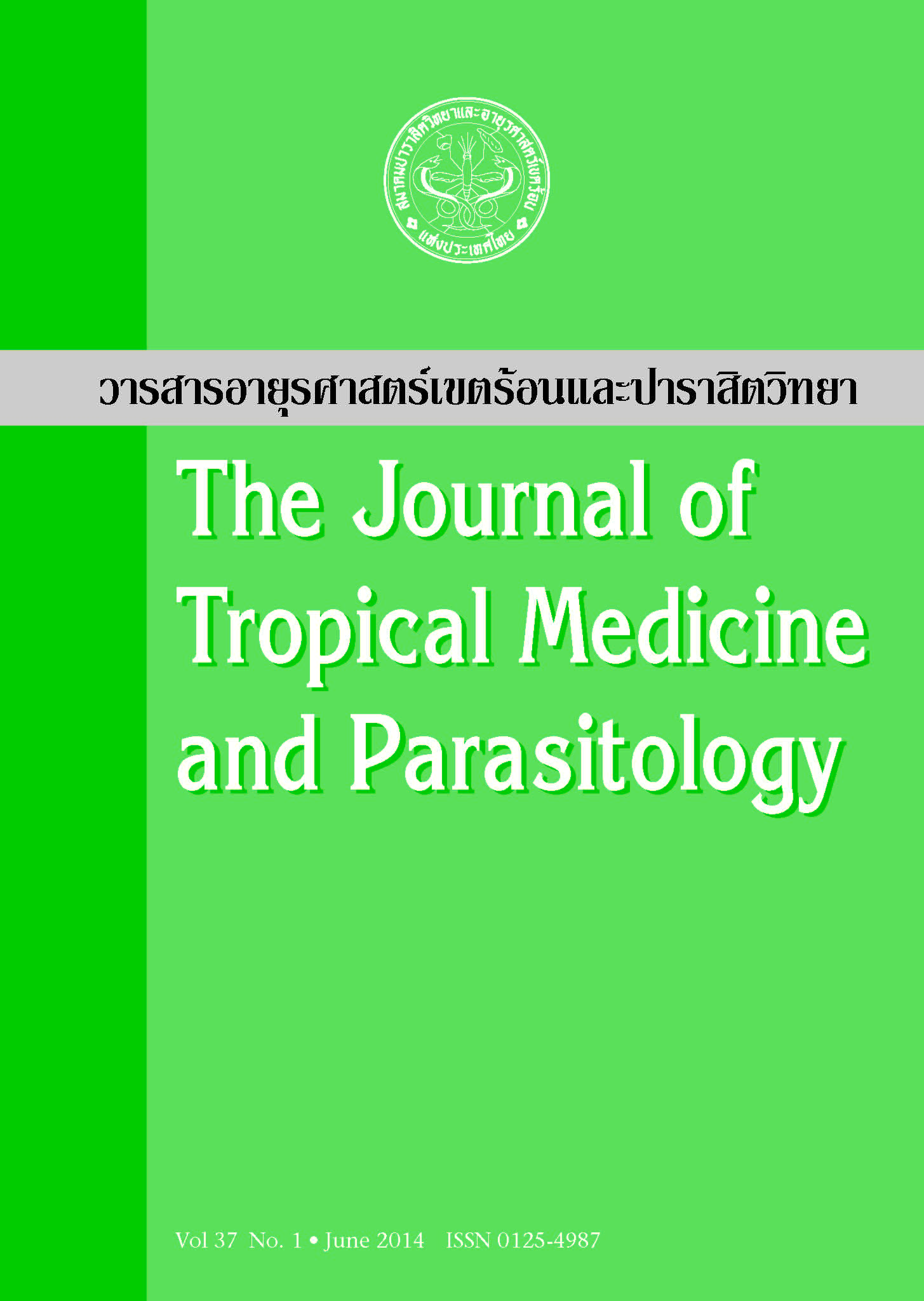Prevalence and risk factors of Babesia infections in cattle trespassing natural forest areas in Salakpra Wildlife Sanctuary, Kanchanaburi Province
Main Article Content
บทคัดย่อ
Bovine babesiosis is a major tick – borne disease in livestock development since this disease has an effect on animal health led to economic losses due to increase mortality and lower production. Babesiosis in cattle is caused by Babesia bovis and B. bigemina and transmitted by tropical cattle tick, Rhipicephalus (Boophilus) microplus. The objective of this study was to investigate the prevalence of Babesia infection in the cattle invading natural forest area of Salakpra Wildlife Sanctuary (SWS) in Kanchanaburi province using molecular assays. A total of 244 cattle blood samples were collected from SWS areas located among 3 districts of Kanchanaburi Province including Mueang, Si Sawat, and Bo Phloi and examined by polymerase chain reaction (PCR) using SBP2 gene to identify B. bovis and rap – 1α gene for B. bigemina. Factors associated with Babesia infection including location, age, sex, herd size, seasonal management, insect abundant, forage density, deworming, domestic pet in household, tick infestations in cattle and barn, and the grazing area management was statistically analyzed. The overall infection of Babesia spp. of cattle in SWS was 46.7% (114/244), comprising B. bovis (5.3%, 13/244), B. bigemina (38.9%, 95/244) and mixed (B. bovis and B. bigemina) (2.4%, 6/244). Mueang District had the highest infection at 47.9% (45/94). The potential significant factors associated with Babesia infections were herd size and age (p<0.05). The high infection of Babesia spp. in SWS indicated the possible risk of the wild to get infections via ticks contaminated in this areas.
